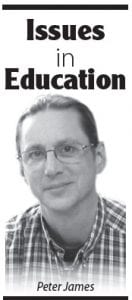The education legislation passed last summer requires every public school district in Minnesota – traditional districts and charter schools alike – to develop comprehensive long range plans and to report on their progress at public meetings next fall. The plans must meet specific criteria, and the Minnesota Department of Education (MDE) has developed checklists and training to help schools complete their work. The over-arching goal is to ensure that Minnesota public schools succeed in developing “The World’s Best Workforce.”
For some, this will be seen as the means to ensure all students will be successful in school and beyond. For others, it will be just one more iteration of “hoop jumping” the legislature has imposed on schools, which have better things to do. It is neither; and it is both. However, I believe it is most importantly a catalyst for reflecting on public education’s purpose and driving action toward fulfilling it.
The Great Expectations School board is composed of educators, parents, and community members. Three weeks ago, they gathered to discuss priorities for the next 3-5 years and how to best serve the school’s mission.
The following week, an even larger gathering of educators, parents, and community members was hosted by the ISD 166 school board as they sought to engage in the same important work. In schools all across the state, people are having conversations about what they want for their children. Regardless of how they get translated into plans, goals, and metrics, the key is that the conversations are taking place.
Do you have an opinion about academics, school finances, educational technology, or student support? Now is the time to share it with your local school board. Want to have a say in what makes the World’s Best Workforce? Now is the time to get involved with a school’s efforts to identify what they should strive toward. Everyone has a vested interest in these efforts to improve public education.
The question “Are we there yet?” is iconic in representing both the frustration of the driver who must endure the uninformed impatience of those who want the trip to be over and the frustration of the passenger who must endure, uninformed, the seemingly endless monotony of each passing mile. The metaphor certainly holds for our education system, where frustrations exist both within and outside of the schools themselves.
It’s true that the work of public education is not a destination, but a journey; and in some ways we will never arrive. To make progress, however, it helps to have an idea which direction you want to go and how to know if you’re on track. Unless new priorities, new approaches, or new thinking become part of a school’s plan, we won’t end up anywhere other than where we’ve been.
School boards will be relying on the plans they are developing for setting direction, establishing priorities, and assessing progress. Organizationally, the goal will be fulfilling the school’s mission and living into its educational vision. Ultimately, however, the goal will be to serve our students, families, and communities by providing the educational opportunities and experiences that will help every child succeed. Are we there yet? No, but we’re on our way
I invite you to join us.
Each month a representative of our local schools will offer thoughts in Issues in Education. This month’s contributor is Peter James, Great Expectations School.



Loading Comments